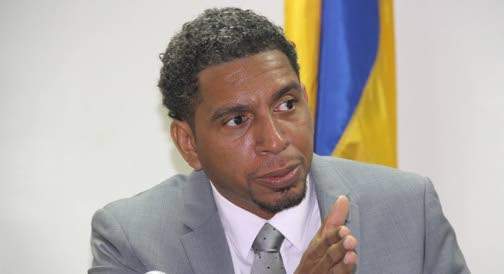The Government of St Vincent and the Grenadines and potential partners
it has been having discussions with have expressed optimism in the
profitability of the US$50 million dollar hotel to be constructed at
Mt Wynne.
That optimism was expressed in parliament last Thursday by finance
minister Camillo Gonsalves as he responded to, among other things,
questions as to cost, the timeline for completion, why state-owned as
opposed to private sector investment.
The finance minister explained that hotel construction cost is
basically discussed on the basis of cost per key which essentially is
the average purchase cost per hotel’s guest room expressed in
thousands of dollars.
“Simply put, the cost per key is the cost of hotel divided by the number
of rooms,” he said.
Gonsalves noted that land acquisition and soft costs such as surveying
of land, insurance, pre-opening cost, furniture, and equipment are also
factored into the overall cost. He said that current industry costs for
new hotel construction in this region range from $95,000 per key on
the budget end of the spectrum to $550,000 per key for the ultra high
end super luxury resort. He said that in a 250 room hotel, therefore,
the range between US$23 million on the low end and US$137 million on
the super luxury end.
“In the upscale hotel range that we are targeting, which is short of
the super luxury end, the cost per key – not including the land purchase
because we already own the land, and not including some of the other
soft costs that are not relevant to a government construction – cost
per key ranges from US$160,000 to 300,000 or a range of 40 to 75
million US dollars for an upscale luxury hotel,” he said.
Gonsalves said that the designers are making suggestions to keep both
the “operational and construction costs lower than the average for
these types of facilities.”
He said that currently it is anticipated the construction of the hotel
will commence around the middle of 2019 and completion is expected no
later than the first half of 2022.
“We have received far more optimistic timeline that this but I prefer,
at this stage, to err on the side of the conservative,” the finance
minister said.
Gonsalves said that according to a future performance operating
document (pro forma document) the potential partner shared with the
government, it is projected that the occupancy rate for the first 5
years ranges from 43 percent in the opening year to 64 percent in the year
5. He said that there is a prediction of “a small net house profit in
the second year of operation” and there is a gradual increase in
profitability over a 10 year period.
“In percentage terms, Mr Speaker, the house profit in year 2 is 13
percent. But, after various deductions – because we are paying them to
manage this hotel and the like – the net house profit would be 6
percent. And, it rises to 14 the year after and 18 the year after that
and 20 the year after that and levels out, roughly, in that range,” he
said.
Gonsalves, at a recent press conference, had stated that the hotel is
expected to pay for itself.
Gonsalves said that some money must be put aside in Escrow in order to
keep hotels properly furnished and for maintenance as the hotels get
older. He said the final numbers in terms of the rate of return and
the like are not yet available.
Responding to the question of a state-owned hotel instead of a private
sector investment, Gonsalves said the question “seems to suggest a
false dichotony” between private or state-investment in hotels when in
the fact both forms of investment in hotels have historically existed in
the Caribbean and are mutually beneficial and reinforcing. He noted
that in his 2018 budget address he mentioned the Barbados Hilton, the
Trinidad and Tobago Marriot and St Kitts and Nevis Marriot as
hotels which are state-owned and managed by an international brand. He
said the Barbados Hilton has been in existence for 50 years.

